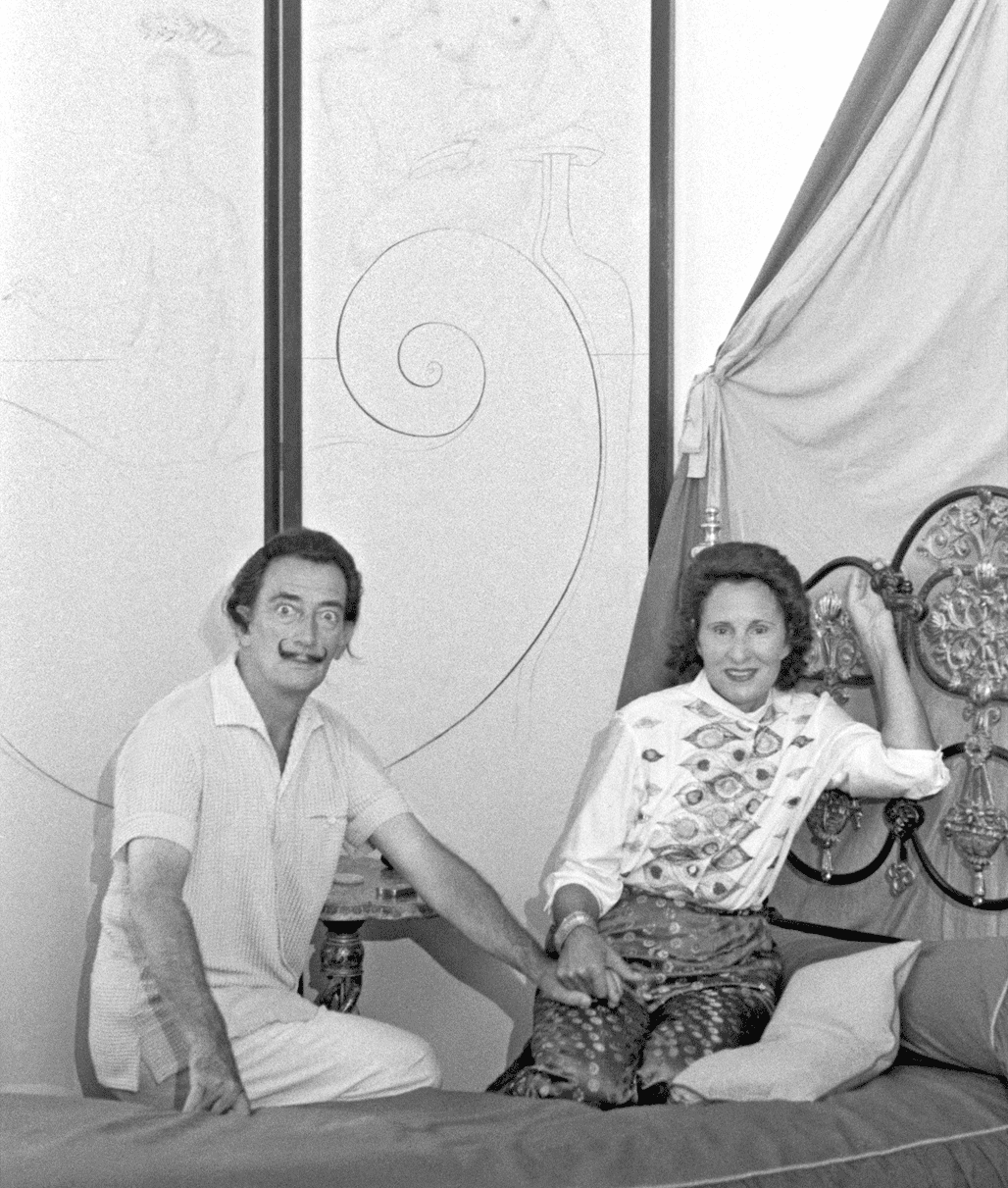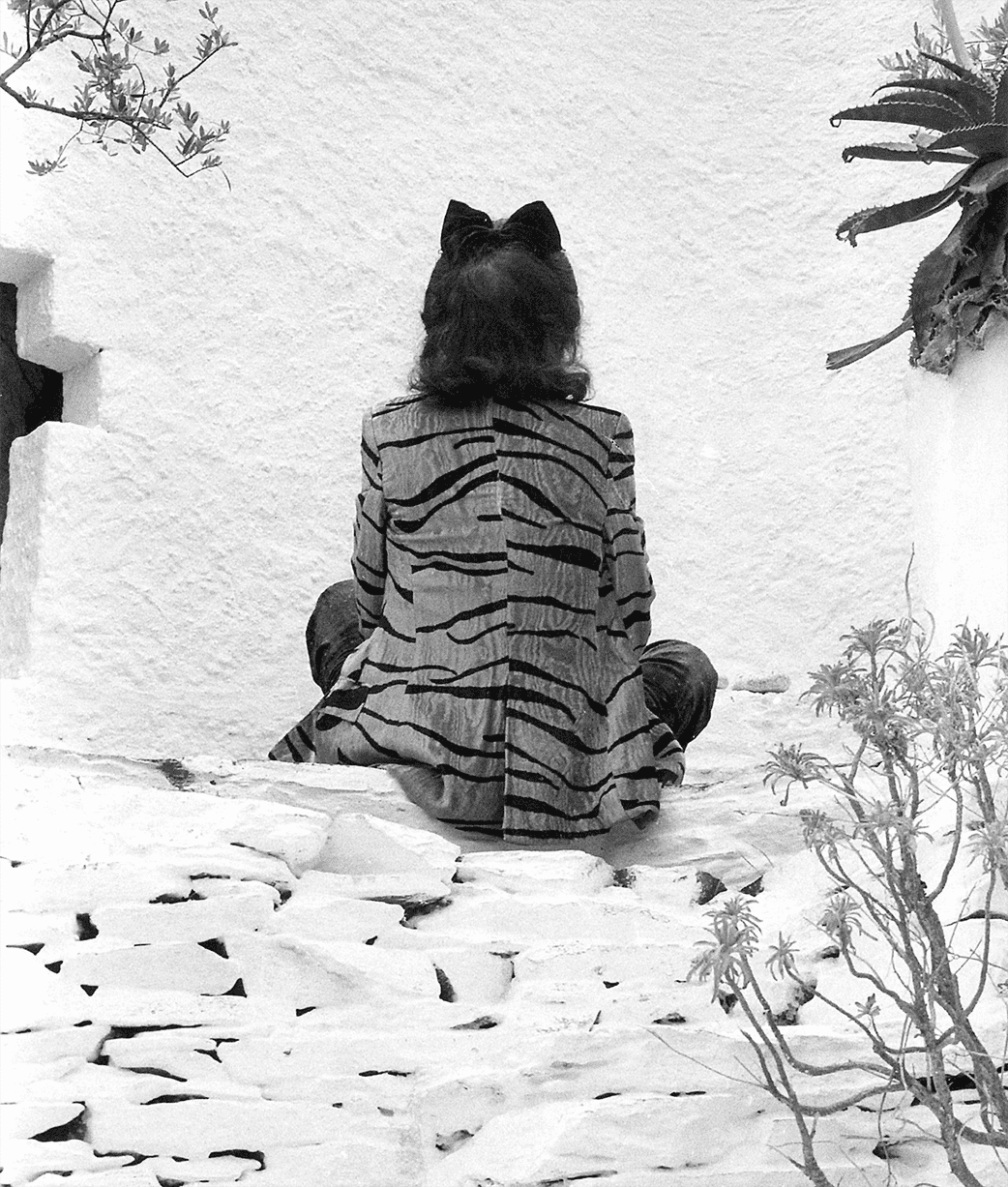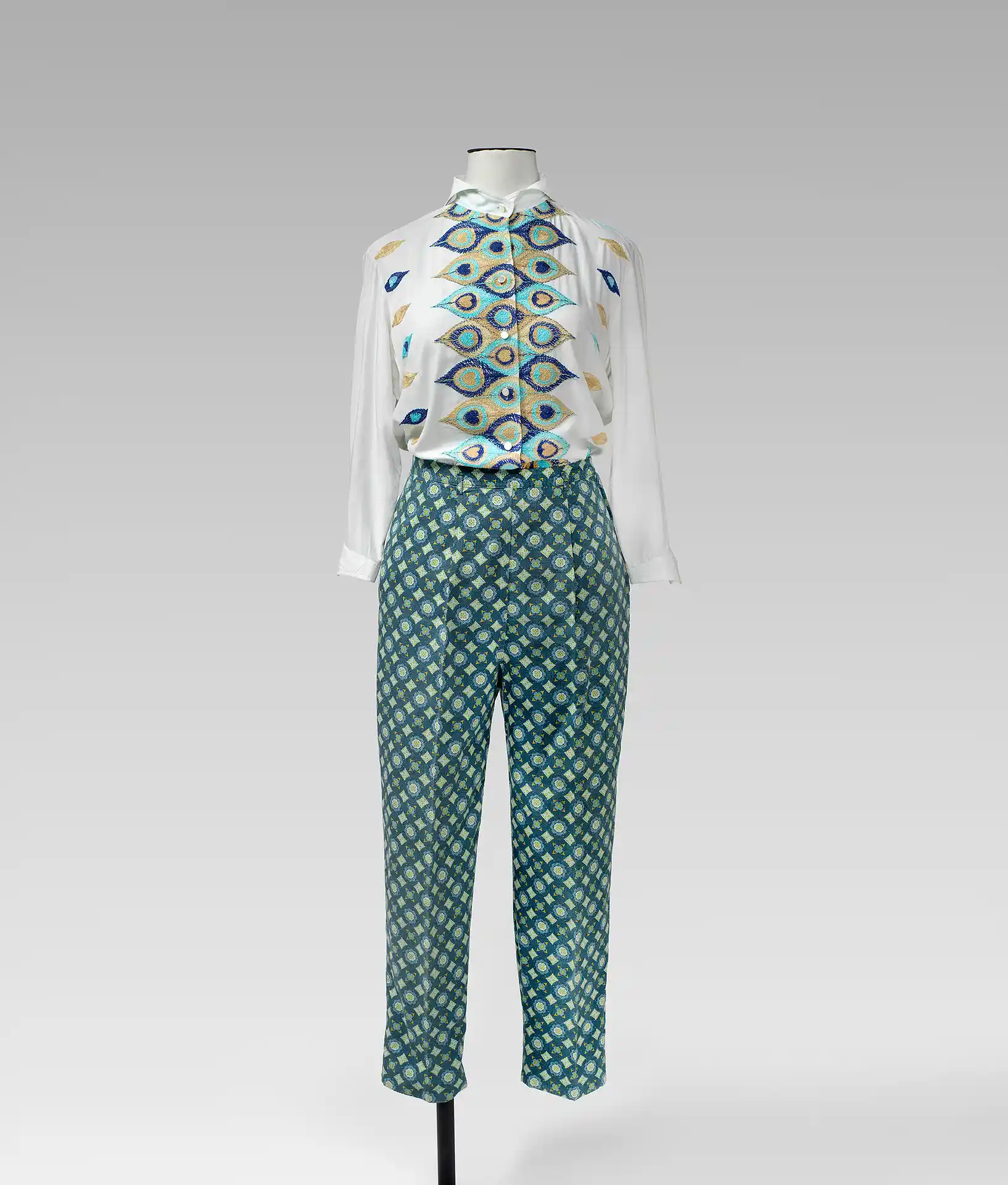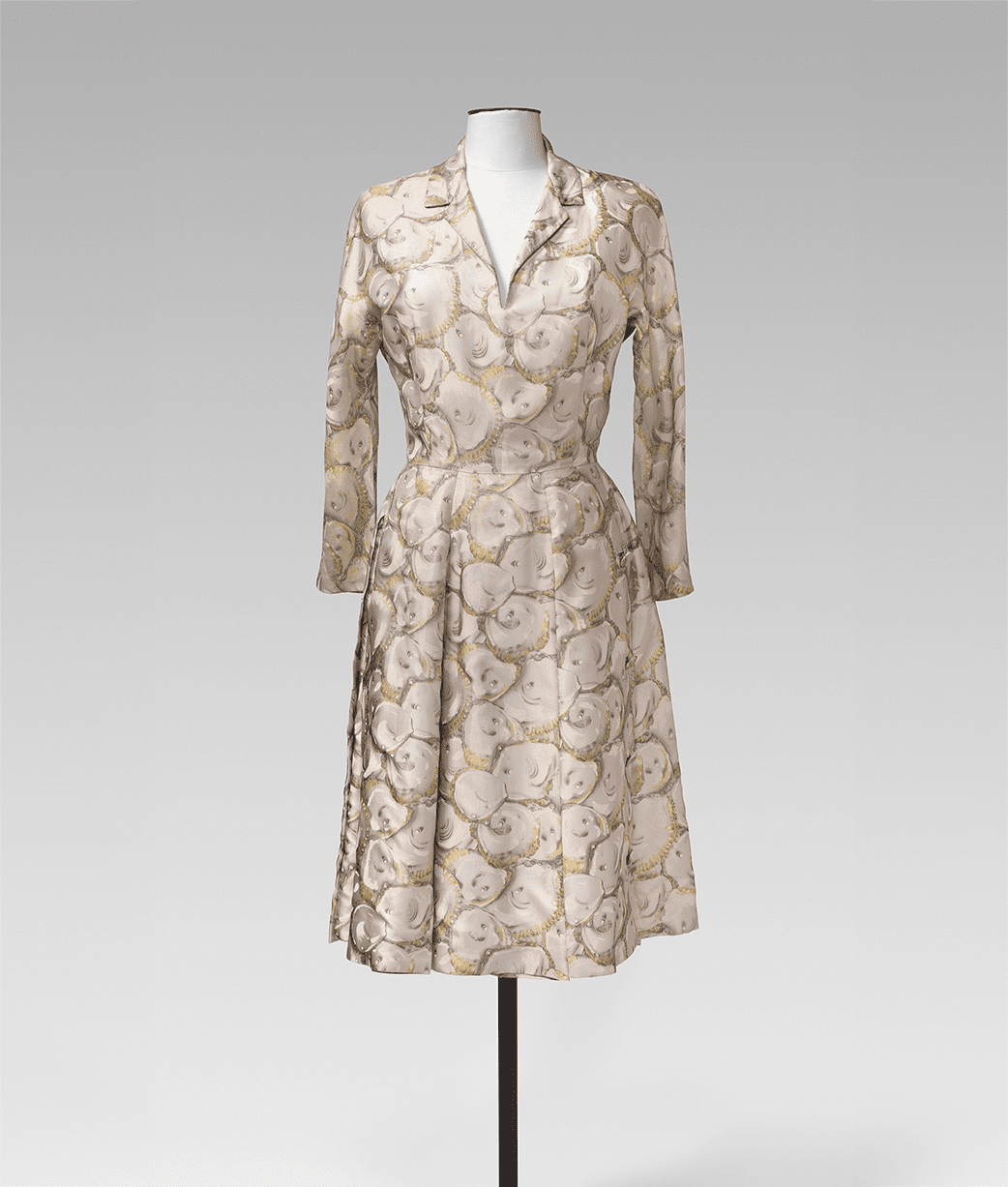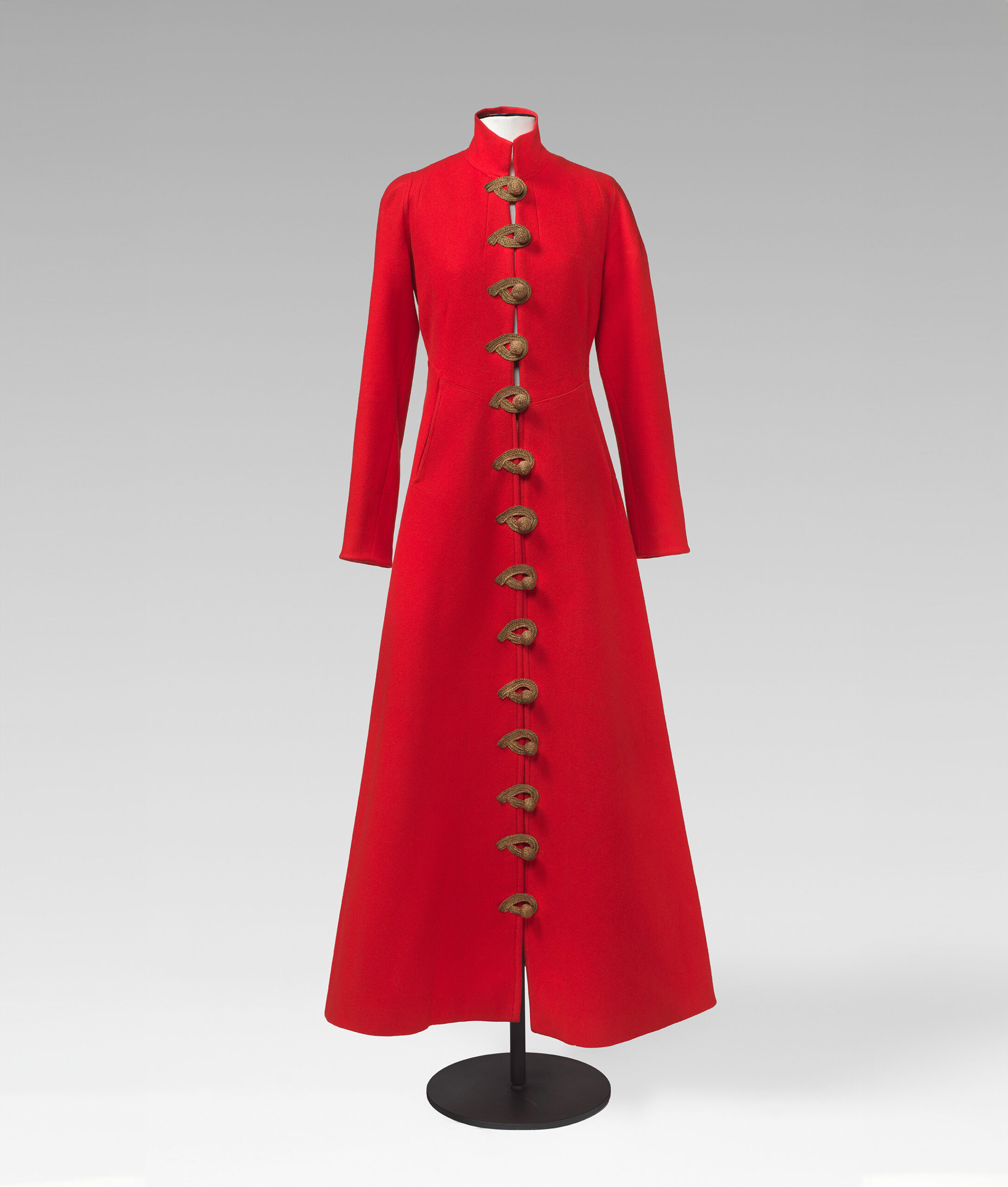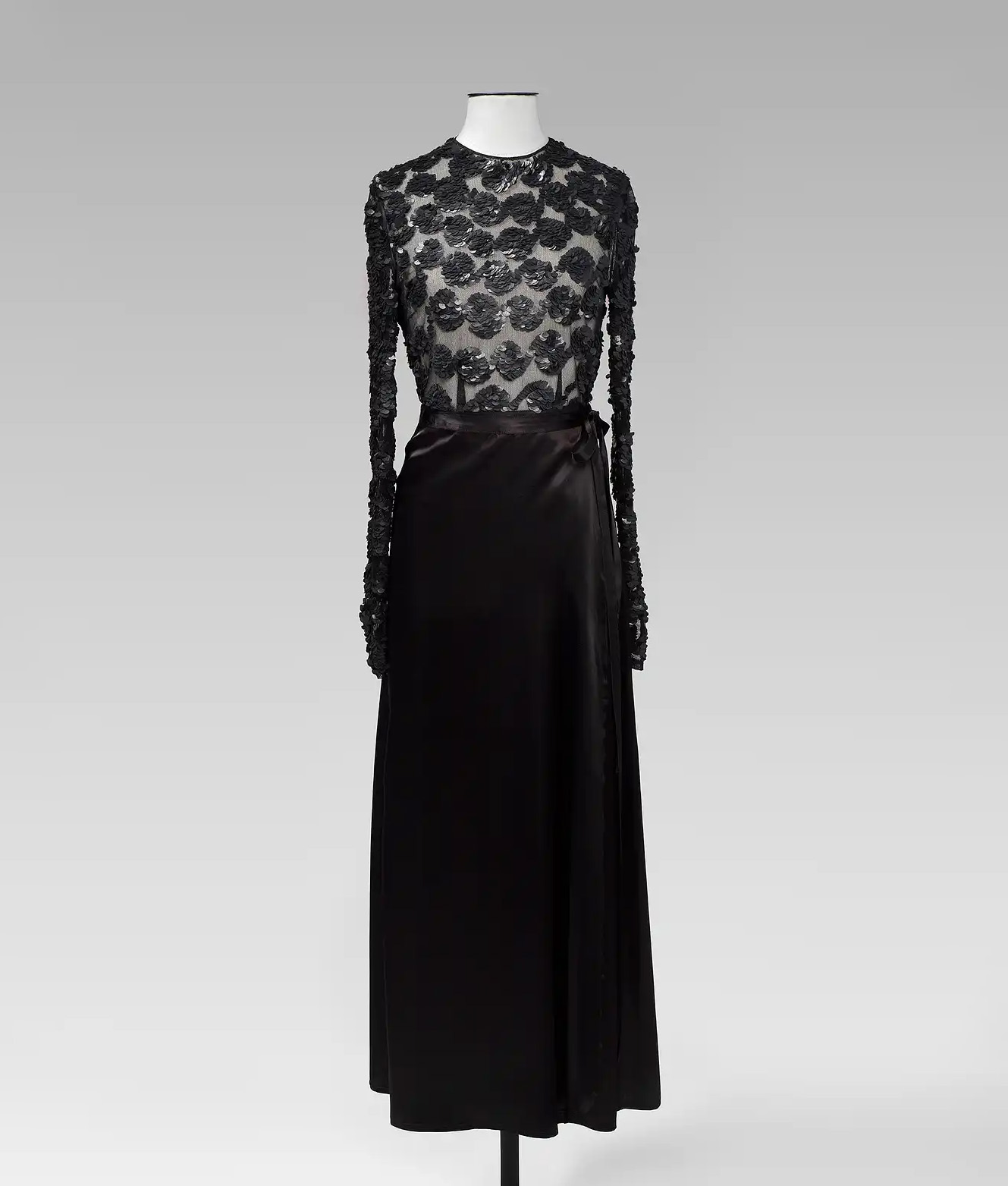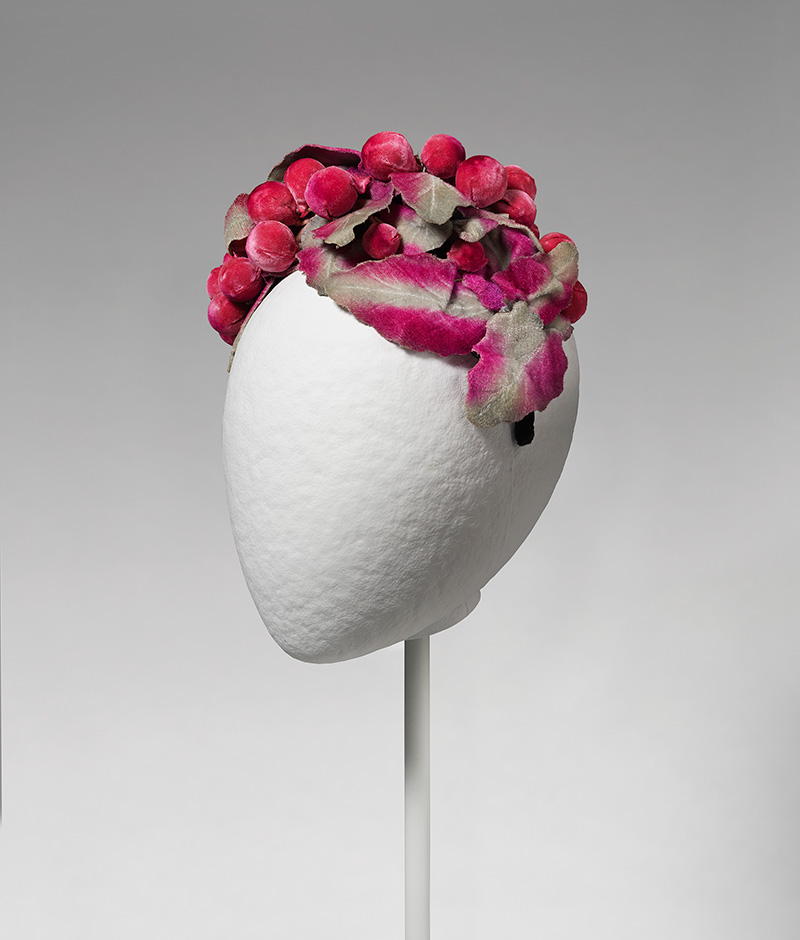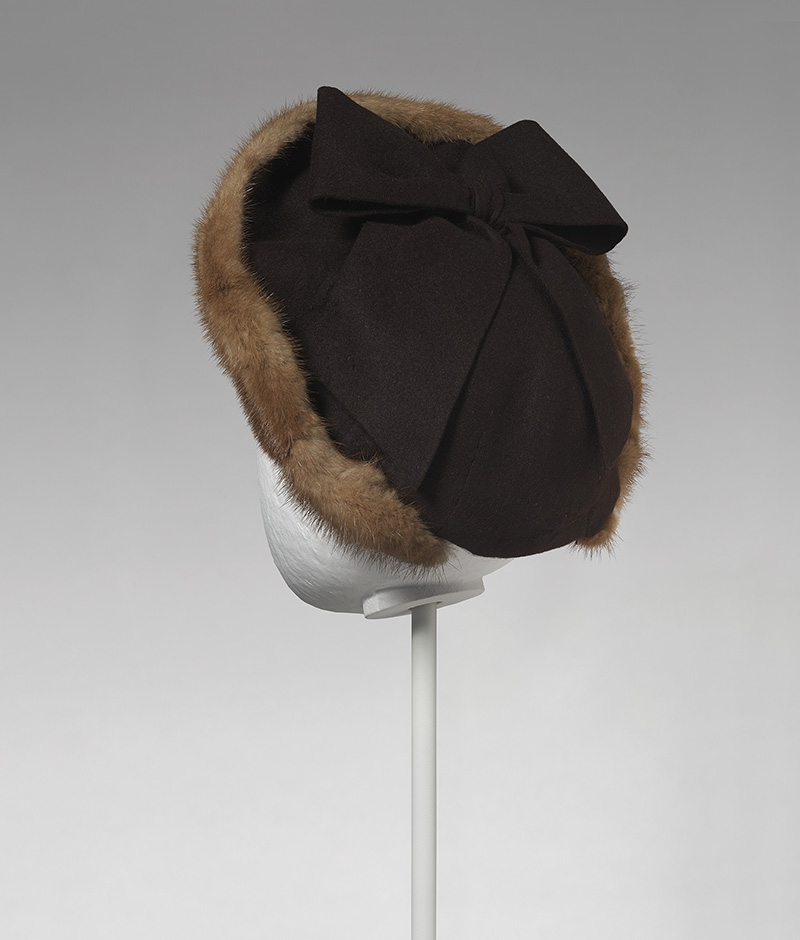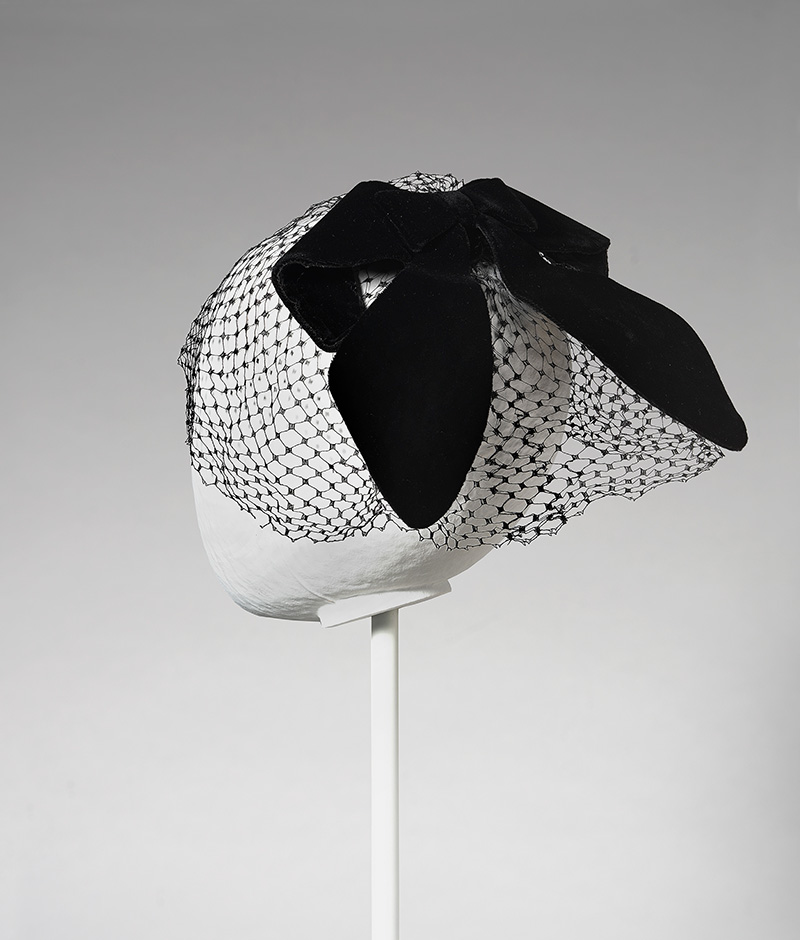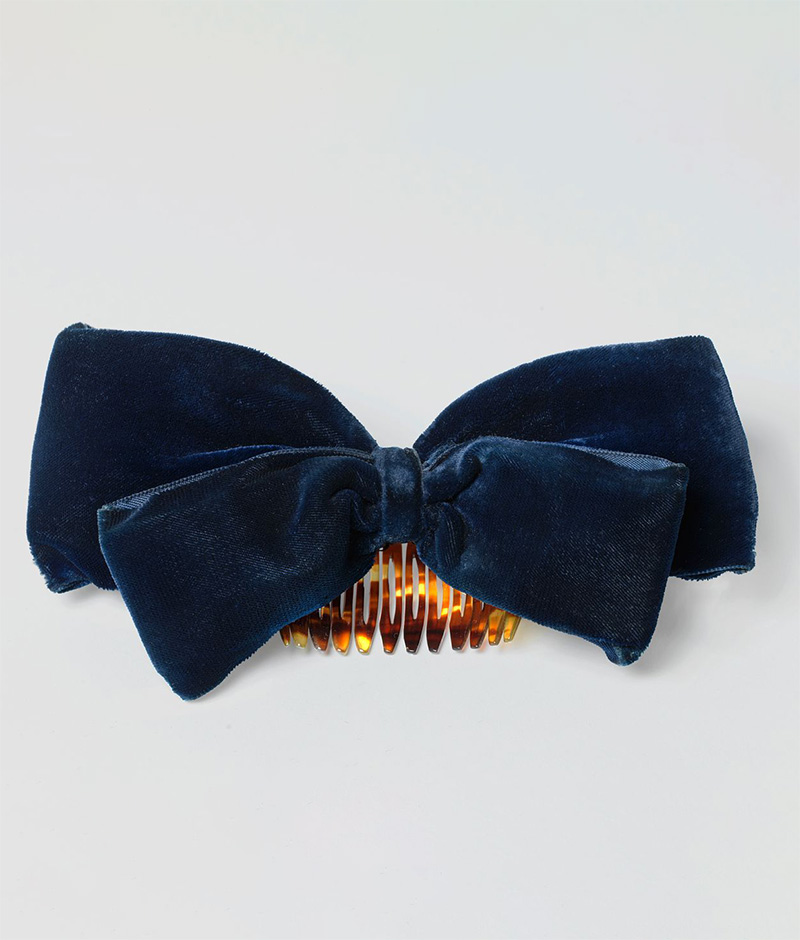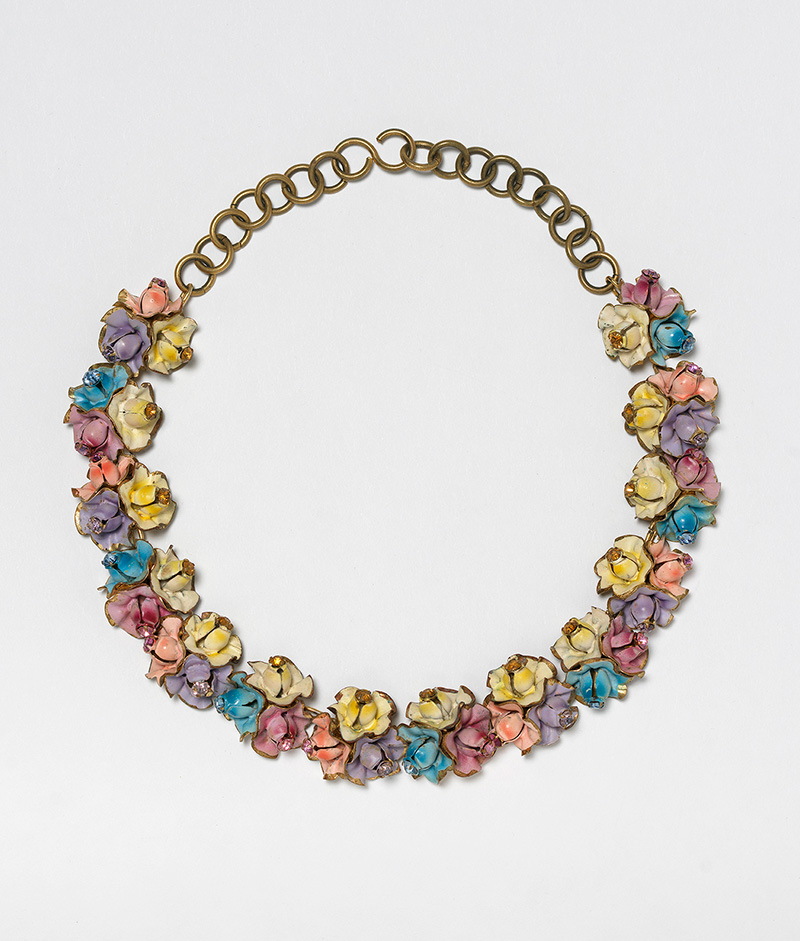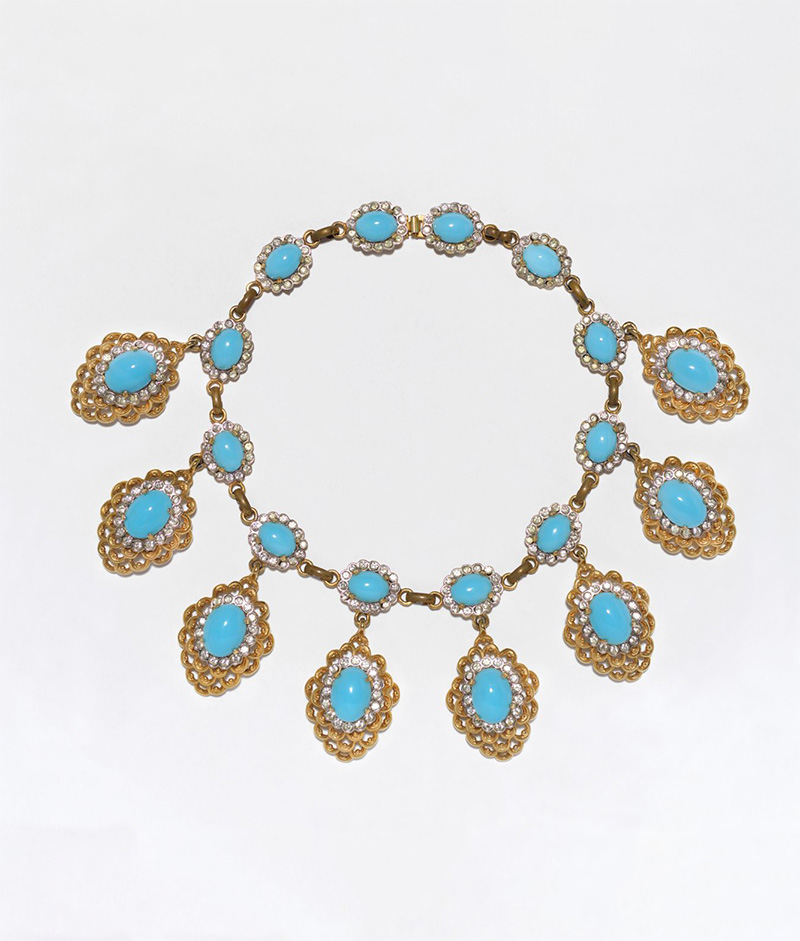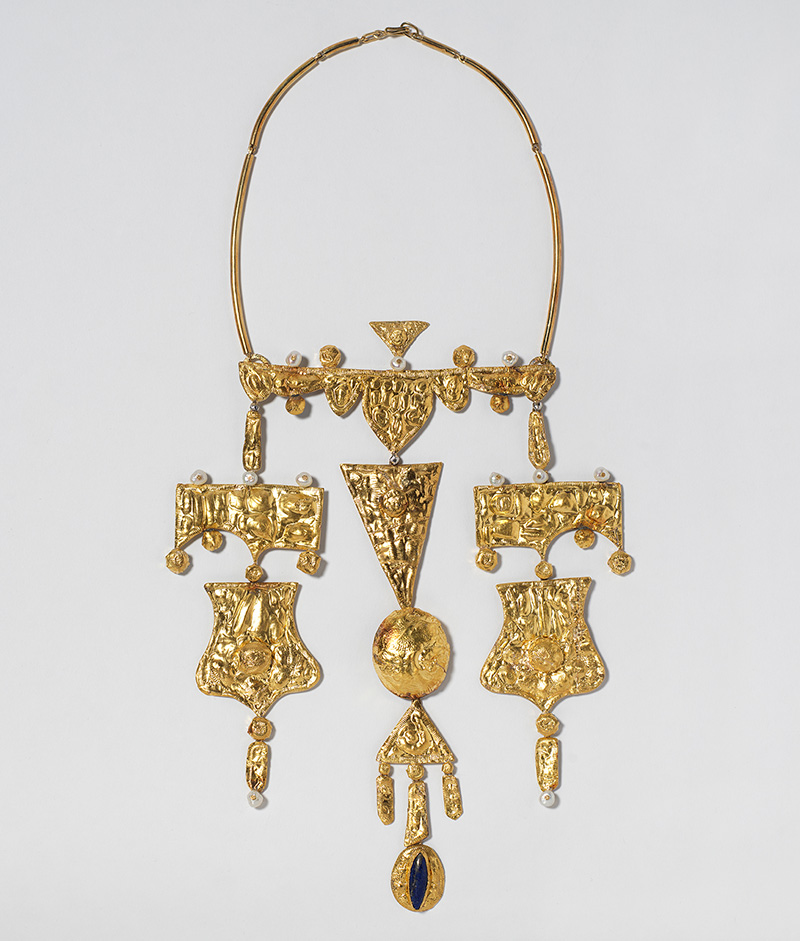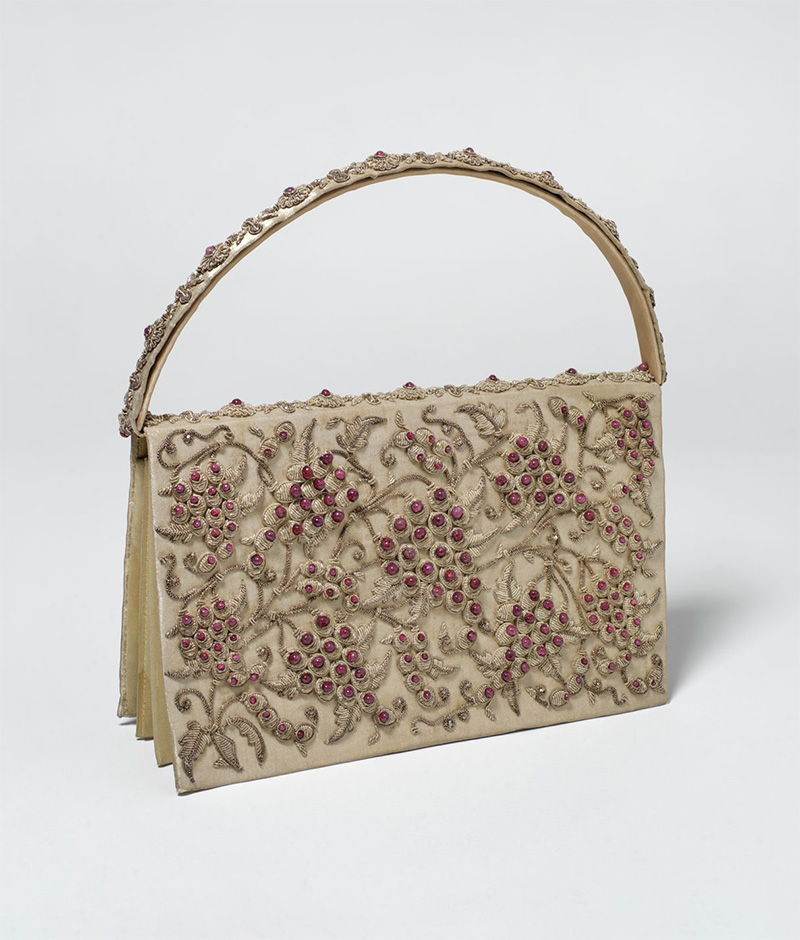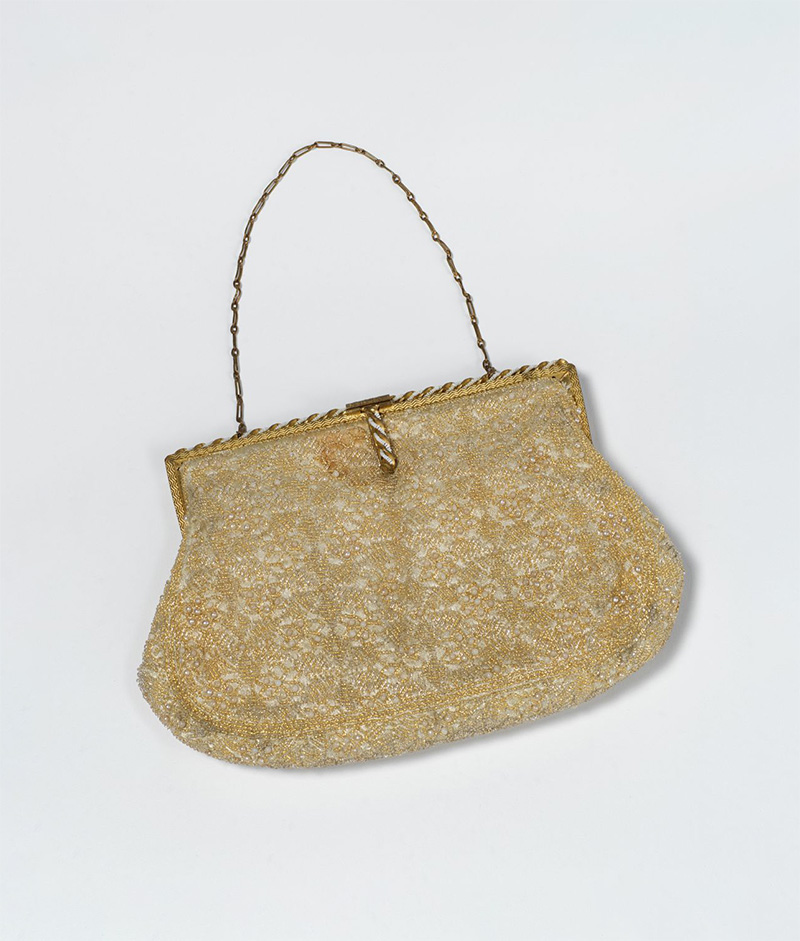Exhibition Cycle
On the 130th anniversary of her birth (in 1894 in Kazan, Russia), the time has come to talk about Gala. And we do so by way of an innovative discourse woven through fashion. A season of small-format exhibitions conceived in three collections (spring-summer, haute couture and autumn-winter) and a final exhibition with some of the most emblematic pieces from her personal archive, in which haute couture designs by Elsa Schiaparelli and Michel Goma rub shoulders with outfits from Hubert de Givenchy or Oleg Cassini, but also with label-free garments which remind us that her image goes far beyond the label, and is the reflection of a unique personality, free of constraints, who, above all, always remained true to herself.
The exhibition project, fruit of the collaboration between the Gala-Salvador Dalí Foundation and La Roca Village, is part of a wider initiative informed by a desire to rediscover Gala Dalí’s identity and assess her impact on fashion, culture, and society.
Spring-Summer Collection
From 18th March to 2nd June 2024
It was in summer, in Cadaqués, that the meeting with Salvador Dalí that was to change everything would take place. The year was 1929 and Gala, who was then married to the poet Paul Éluard, occasioned both fascination and uneasiness, in equal parts. She was ahead of her time, and she interpreted the configuration of the modern woman better than anyone, using fashion as a form of expression in defiance of conventions. Her wild curiosity subverted current trends in favour of an androgyny that adopted masculine codes to define a new femininity.
Bathed in the sun’s light, the femme dandy of avant-garde Paris disguised herself as a muse and dazzled. The way she dressed had a poetic dimension that was almost performative, but it was also public and eminently practical. Gala, who in Éluard’s words “lives to forget”, changes her skin every day to stage the triumph of talent and consummate her own myth through Dalí. A masquerade that, like the trompe-l’œil print designed by the painter, projects a sometimes misleading, fake image. A liquid and oscillating identity – like the Mediterranean Sea, unfathomable and impossible – like the moiré of ‘tiny scales in all the colours’ of the Dior dress that she was to wear on so many occasions at Púbol.
Collection of Haute Couture
From 17th June to 22nd September 2024
Gala felt comfortable being the centre of attention. She was just sixteen when she attended her first ball, at the court of the Tsar in Moscow, wearing a red dress. A colour that expresses power, seduction, and sexuality. A symbol of chromatic liberation in the nineteen twenties, red hides the idea of an intimate, private revolution. It was Christian Dior’s favourite colour and also one of Gala’s fetishes, which she used in several Dalinian performances.
In Paris in the early nineteen thirties couturiers, artists, architects and intellectuals moved in the same circles. They shared ideas, concepts, techniques, and languages in relation to the body and the skin – that habitable space – as the starting point for encounters and affinities that would make history: a young Christian Dior venturing to become a gallerist, Elsa Schiaparelli experimenting with surrealism and Gala seeing spaces of opportunity in which Salvador Dalí’s work could embrace new forms of expression. Eminently practical, she chose to set aside the sobriety of Chanel for the eccentric excess of Schiaparelli so as to show off and publicise Dalí’s collaboration with the Italian couturier.
During her stay in the USA, Gala invented new media skins and once again transformed her persona: from dandyism to Dior’s New Look. From an androgynous comfort to a (public) corsetting of a silhouette that represents the return to a classic femininity. And when Gala and Dalí returned to Europe after the war, she dressed as a flower in the Musée du Louvre dress and the Saint-Ouen red coat, both from the 1949 spring-summer haute couture collection (the same year that Monsieur Dior creates his Rouge lipstick).
Autumn-Winter Collection
From 5th October 2024 to 7th January 2025
Two sentences penned by Breton in 1922 urged people to rebel against routine: Lâchez tout. Partez sur les routes – “Leave everything. Take to the roads”. Nomadism and change defined Gala’s whole conception of life (and of fashion), in that constant coming and going between Paris and Cadaqués, between New York and Italy.
In the age of the great ocean liners, going on board and disembarking were memorable moments. Gala and Dalí knew how to turn the gangways of those giants of the sea into a catwalk, a show that would ensure banner headlines. That first trip to New York, in November 1934, marked the beginning of the conquest of America. For decades, every winter, their suite at the St. Regis Hotel became their home… and their display case. Beyond museums, their life revolved around happenings, performances and publicity. A strategy that Gala adapted to her media image (or public alter ego), with outfits from Arthur Falkenstein (the artistic circle’s favourite American label) or Howard Greer (couturier to Hollywood’s Golden Age, who designed the very young Gloria Vanderbilt’s wedding gown).
Iconics designs
From 18 March 2025 to 7 January 2026
Through the most notable fashion designs and accessories from Gala’s personal archive, we invite you to delve deeper into the woman with her own personality who stands behind Salvador Dalí. Confident of the image she wished to project, Gala found in the creations of Elsa Schiaparelli, Mimi di Niscemi and Maurice Renoma, among others, a legitimate and powerful means of expression and self-discovery, which enabled her to add layers to the legend she aspired to be.
Muse, wife, representative, associate… In the course of her life, Gala adopted different roles or identities in relation to the artist, revealing herself as a creative and resolute woman who was very well aware of how she wanted to present herself and who exercised a constant control over her representation in the different artworks, photographs and Dalinian actions in which she appears. In this she was actively involved in the configuration of her media image and, to a certain extent, also the instigator of her own myth.
The Visible Trace of Gala Dalí
Artistic project by Jordi Bernadó
The legend of Gala Dalí stalks, invisible, the rooms of the castle of Púbol. Converted into the stage for the muse-cum-performer’s performances, the castle is now a topography of spectral traces: Gala’s memory inhabits the place and haunts it, pulling the strings of the show like a stage director. Hers was an ambivalent choreography: at once creator and muse, both woman and ghost. The legacy of a complex and irreverent mind lives on in the castle and, above all, in the outfits she wore as an aspect of her personal fiction. Pieces by Dior, Givenchy, Oleg Cassini and Loewe, among others. Designs that are the most essential gesture of Gala Dalí the character, the most intimate mask, the first layer of her theatricality.
Jordi Bernadó takes us inside Púbol in the footsteps of Gala and her fashion collection. The pictures focus on the dresses, portrayed as if the presence of the wearer were filtered through each one. The photographs act as mediating surfaces, portals that connect the costume with the body.
Discover more: https://www.jordibernado.com/galadali
Explore the Collection in 3D
At the Gala-Salvador Dalí Foundation, our aim is to offer our visitors a complete immersive experience. This being so, technology has a crucial role in our exhibitions, because it allows us to discover and display the collection of Gala and Salvador Dalí like never before. A good example of this is the collection of 3D digitized dresses on show in this exhibition cycle.
The technology allows us to present these designs in unprecedented detail. At the same time, the 3D visualization also allows us to interact with the pieces in a new and dynamic way. They can be turned around, enlarged, and studied from any angle, helping us appreciate the beauty and complexity of these designs created by prestigious couturiers and great fashion houses of the last century.
View all dresses


